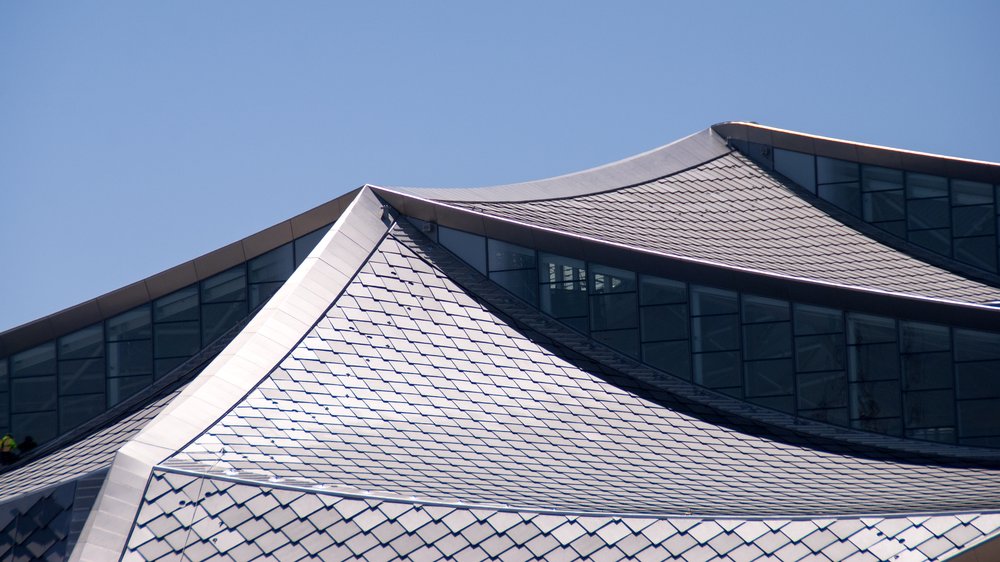From pv magazine USA
One of Google’s newest buildings is using a building integrated photovoltaic (BIPV) product called Dragonscale, which is manufactured by European solar panel company SunStyle.
And it is gorgeous.
The internet giant, which also is a world-leading clean energy procurement company, has installed around 7 MW of the product on two buildings at its Silicon Valley campus. The 90,000 individual solar panels will generate enough electricity to cover around 40% of the electricity used in the buildings, known as Bay View and Charleston East.

The solar cells are embedded into a sturdy, but flexible, polyvinyl acetate (PVAc) layer. Six millimeters of hardened solar glass protects the face of the panels; the back is protected by a layer of fire-resistant Tedlar (polyvinyl fluoride). Because the edges of the tiles are sealed to keep out moisture — much like a glass-glass solar panel — aluminum framing on the panel is not necessary.
The polyvinyl layer is a highly textured “prismatic” surface, which traps photons within the solar panel that would normally escape from traditional flat solar panels. The result is an increase in solar panel generation.

Technically, if we were to only install one of the panels it would have an efficiency of 15%. That is because the standard shingle doesn’t have a solar cell in the top square due to the product’s overlapping nature. But when we take into account the overlapping configuration, the effective efficiency rating is closer to 17%, which is what the company lists on its website.
The solar cells are a standard monoPERC (monocrystalline passivated emitter and rear cell) product. The panels connect with a standard MC-4 type connector and use industry-standard solar inverters.
The company’s specifications list five separate solar panel types, which fit into the border areas of the roof, taking advantage of the entire roof.

Sunstyle shared a .gif on its website to show how the product is installed. The solar tiles are screwed directly into the sun-roof structure. The substructure can be made of wood or stainless steel.
A wood lattice substructure is the common roofing technique used in Europe. This allows for solar panels to be better used as building material. In the United States, this lattice substructure would be the rafters located under a plywood base.
The warranty covers the product’s ability to generate electricity as well as its integrity as a building material. The shingles are guaranteed to last 30 years. Energy output is guaranteed to remain above 90% of its rated efficiency after 10 years, and above 80% after 25 years.
This content is protected by copyright and may not be reused. If you want to cooperate with us and would like to reuse some of our content, please contact: editors@pv-magazine.com.








By submitting this form you agree to pv magazine using your data for the purposes of publishing your comment.
Your personal data will only be disclosed or otherwise transmitted to third parties for the purposes of spam filtering or if this is necessary for technical maintenance of the website. Any other transfer to third parties will not take place unless this is justified on the basis of applicable data protection regulations or if pv magazine is legally obliged to do so.
You may revoke this consent at any time with effect for the future, in which case your personal data will be deleted immediately. Otherwise, your data will be deleted if pv magazine has processed your request or the purpose of data storage is fulfilled.
Further information on data privacy can be found in our Data Protection Policy.